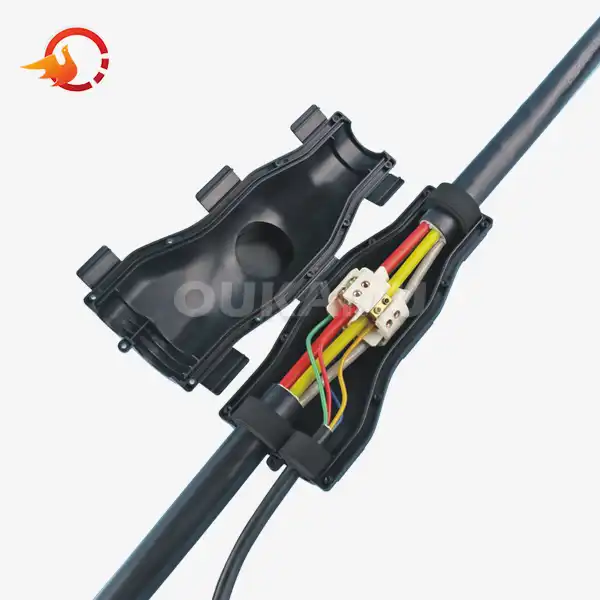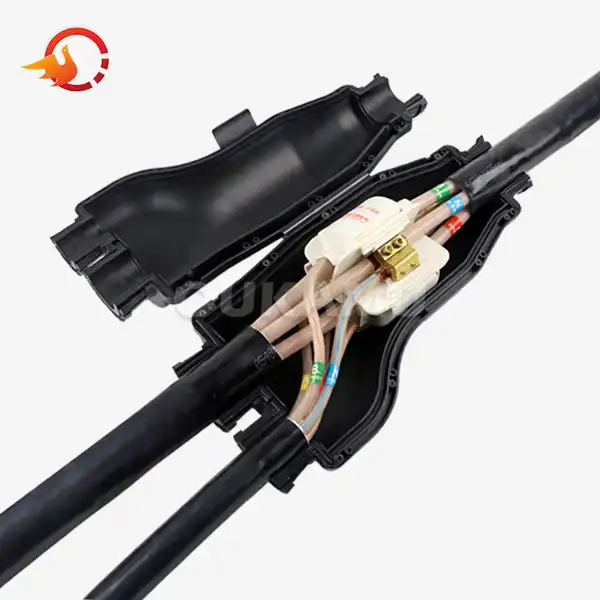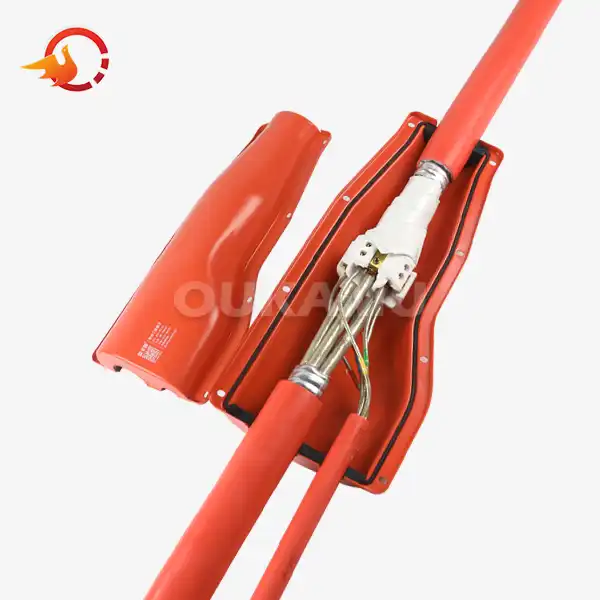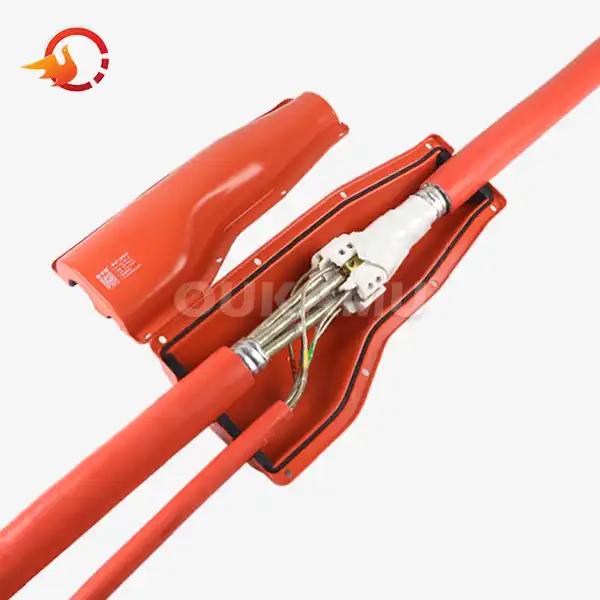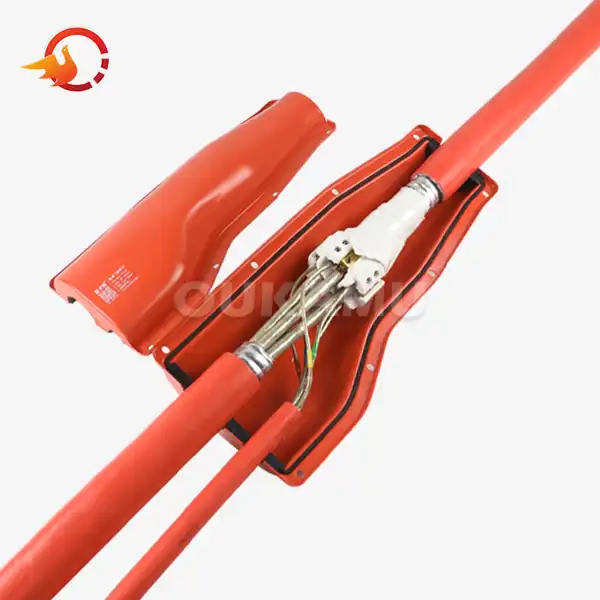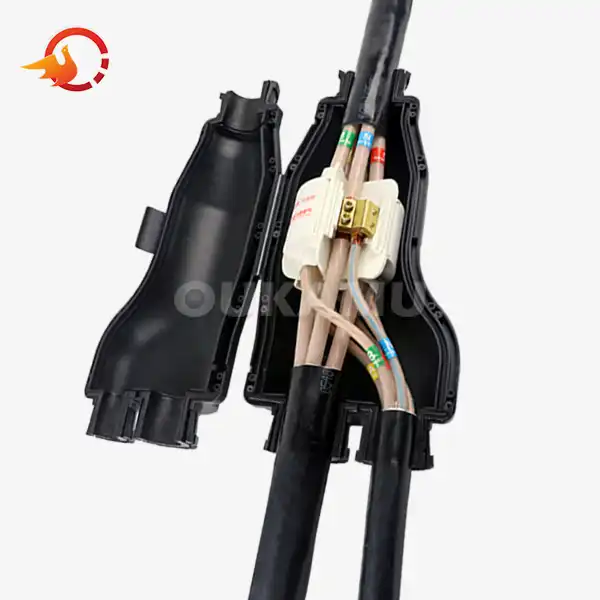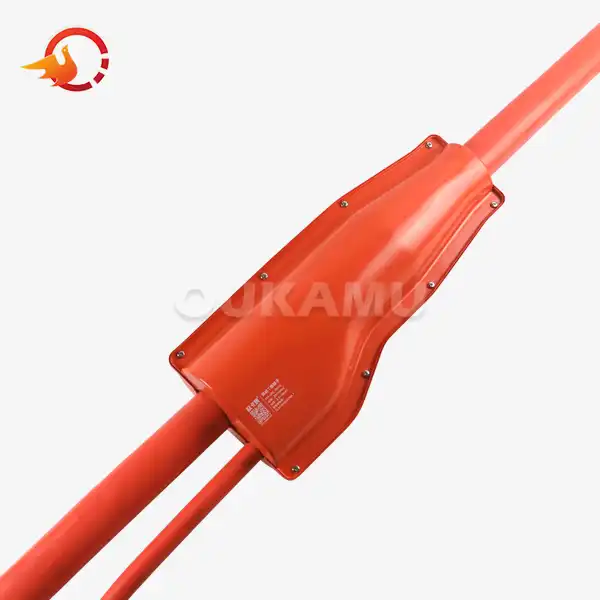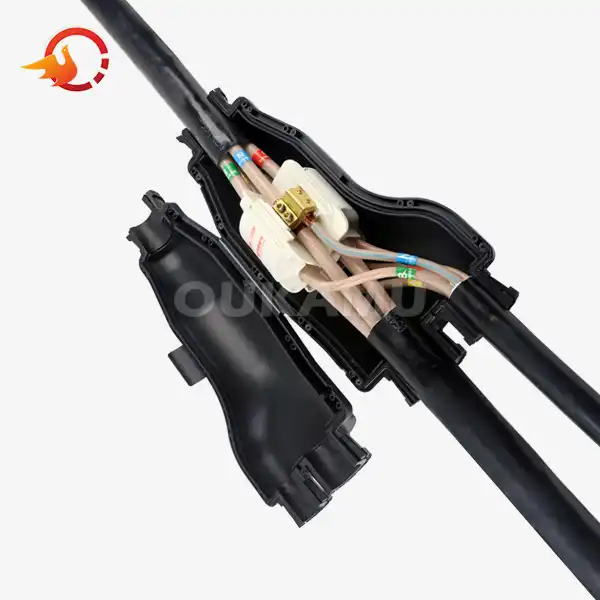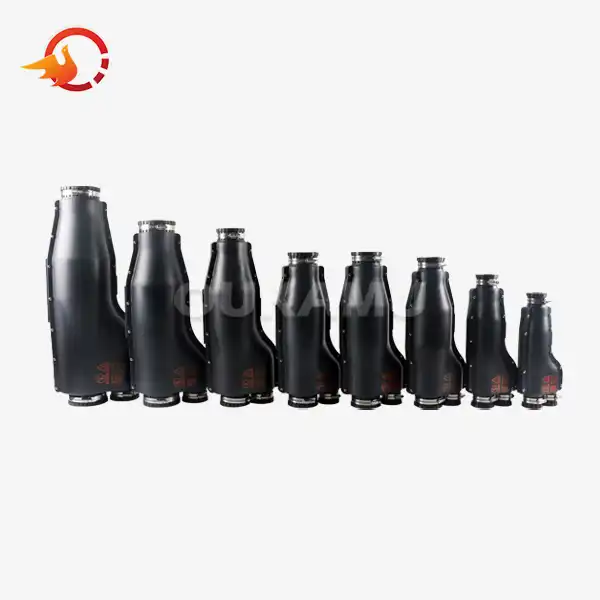Specialised in branch cable connector for 20 years
IP68 Waterproof
Suitable for main cable 10~35mm, branch cable 2.5~16mm
Gel-filled insulation and waterproof, double safety protection
Concealed installation in wells or direct buried soil
No need to cut the main cable, no need to reserve lengths
Flexible installation location
Low overall cost, high cost performance
Underground Cable Jointing Introduction
Underground cable jointing serve as critical linkages, joining disparate sections of buried cables to form a seamless electrical network. As a vital component in the arsenal of electrical engineers, these specialized connectors play a crucial role in safeguarding cables from the harsh underground environment, effectively shielding them from:
Moisture intrusion, which can lead to corrosion and electrical faults
Dust and debris, which can compromise cable integrity and disrupt signal transmission
Foreign objects, which can cause physical damage and disrupt electrical continuity
Dimension

Parameters
|
MODEL
|
Specification (cross-sectional area of cable core conductors (mm²) |
Technical Parameters |
|||
|
Main Cable (2~5 Cores) |
Branch Cable (2~5 Cores) |
Rated Voltage (kV) |
Subloaded Current (A) |
Size L*W*H(mm) |
|
|
T-GJFZ-16/10 |
4~16 |
1.5~10 |
0.6/1 |
71 |
205*100*85 |
|
T-GJFZ-35/16 |
10~35 |
2.5~16 |
0.6/1 |
95 |
270*115*100 |
|
T-GJFZ-70/16 |
25~70 |
2.5~16 |
0.6/1 |
95 |
310*125*115 |
|
L-GJFZ-35/16 |
10~35 |
2.5~16 |
0.6/1 |
70 |
270*115*100 |
|
L-GJFZ-70/16 |
25~70 |
2.5~16 |
0.6/1 |
70 |
310*125*115 |
Technical Parameters
Application: Connecting low-voltage flame-retardant, fire-resistant, and mineral-insulated fire-resistant cables.
Material: High-quality flame-retardant and fire-resistant materials designed for underground applications.
Installation: Adaptable for both open and bridge installations.
Design: Compact and integrated structure for streamlined installation and minimal space requirements.
Cable Types: Typically involves armoured cables designed to withstand environmental stresses, such as moisture, soil pressure, and physical damage.
Jointing Methods: There are various methods to join cables, including:
Heat Shrink Joints: Use heat to shrink a plastic sleeve around the joint for insulation.
Cold Shrink Joints: Utilize a pre-stretched rubber sleeve that shrinks into place without heat.
Resin Joints: Use resin to provide mechanical strength and electrical insulation.
Underground Cable Jointing Benefits
Reliability: Ensures secure, long-lasting connections that can withstand underground conditions.
Reduced Visual Impact: Minimizes the need for overhead lines, preserving the aesthetic of the environment.
Protection from Weather: Underground cables are less susceptible to weather-related issues such as wind and ice.
Underground Cable Jointing Technical Features
Our Underground Cable Jointing boasts innovative features that set it apart:
No Cable Cutting: This eliminates the need to sever cables, preserving their integrity and ensuring a safer installation process.
Integrated Connection: Main and branch cables are seamlessly joined on the integrated T-connector body, providing a secure, reliable, and tamper-resistant connection.
Insulated and Sealed Branch Cable: The branch cable is fully insulated and sealed, offering complete protection against environmental factors, ensuring safety, and preventing corrosion or leaks.
Composition and Classification
This system is available in various configurations to cater to different cable types and sizes. The specific composition and classification will depend on the unique requirements of your project. For detailed information on the various models and their specifications, please contact us at [info@okmbranchcable.com].
Application Fields
The Underground Cable Jointing system proves invaluable in diverse sectors:
Power Distribution: Branching low-voltage cables for residential, commercial, and industrial applications.
Industrial Infrastructure: Connecting cables in factories, warehouses, power plants, and data centers.
Telecommunications: Branching fiber optic cables for robust network connectivity.
Transportation: Connecting cables in railway systems, airports, and other transportation infrastructure.
Construction: Branching cables for large-scale construction projects, both above and below ground.
Packaging and Transportation
This system is meticulously packaged to ensure safe and secure transport. We offer various packaging options to suit your specific needs and project requirements. For details on packaging and transportation options, please contact us.
Why Choose Underground Cable Jointing?
Enhanced Safety: Eliminates cable cutting, reducing potential hazards and ensuring a safer installation process.
Increased Efficiency: The integrated design streamlines installation, saving time and labor costs.
Improved Reliability: The secure connection and robust materials ensure a long-lasting and reliable performance.
Reduced Costs: The system minimizes material waste, lowers labor costs, and reduces the overall project cost.
Environmental Considerations: The use of high-quality, flame-retardant materials contributes to a safer and more sustainable environment.
Contact Us
For Underground Cable Jointing inquiries, technical specifications, and to place an order, please contact us at info@okmbranchcable.com. Our team of experts is dedicated to providing you with the best possible support and solutions.





